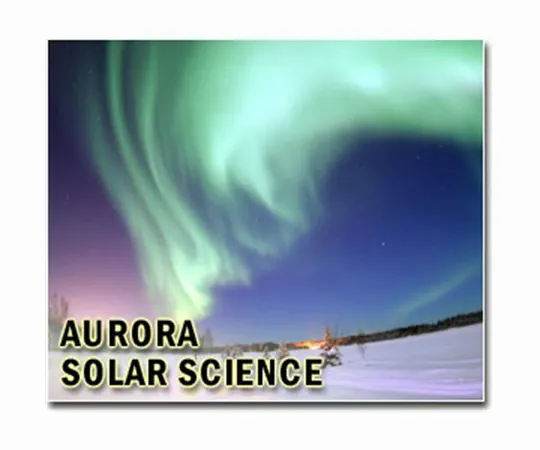
The Mystery Unraveled: What’s Behind the White Patch in the Northern Lights?
2025-01-13
Author: Jacques
Introduction
In an exciting breakthrough, researchers at the University of Calgary have finally provided an explanation for the enigmatic white patch that occasionally accompanies the mesmerizing aurora borealis, a phenomenon also known as "structured continuum emission." This mysterious white-grey hue has captured the curiosity of scientists for decades and was formally detailed in a study published on December 30, 2024, in the prestigious journal *Nature Communications*.
The Findings
Dr. Emma Spanswick, the lead author of the study and an associate professor in the Department of Physics and Astronomy, elaborated on the spectacular sighting: “While watching the vibrant greens and reds of the aurora, the sudden appearance of this structured grey or white emission can leave one puzzled. Naturally, the immediate question is, ‘What exactly is that?’”
Although earlier studies had acknowledged the presence of this white patch, its underlying cause remained a mystery until now. The researchers concluded that it is “most certainly a heat source,” shedding new light on the intricate nature of the aurora borealis itself.
Technological Advances
Thanks to advances in digital photography and camera technology, both scientists and amateur photographers can now capture these stunning phenomena with greater clarity. Dr. Spanswick commented on this technological evolution: “Digital cameras can now effectively document the aurora's splendor, allowing us to recognize previously indistinguishable details.”
The Connection to STEVE
Intriguingly, the research into structured continuum emission was partially driven by a surge of interest surrounding STEVE (Strong Thermal Emission Velocity Enhancement), a luminous ribbon of purple light often observed in conjunction with auroras. Dr. Spanswick noted, “There are intriguing similarities between structured continuum emission and STEVE. While STEVE is easily visible as a big band in the sky, this new emission appears more interwoven with the dynamic auroras, making it less recognizable.”
Student Contributions
The research not only unveiled the mystery of the white patch but also highlighted the contributions of three dedicated students from the university. Among them, undergraduate Josh Houghton transitioned from intern to co-author on the publication after engaging in in-depth data analysis. Excited about his learning journey, Houghton remarked, “Being part of this project from the start has been incredibly rewarding and fascinating.”
Dr. Spanswick commended Houghton’s commitment, stating, “He's had an extraordinary internship experience, and his passion is commendable.” Houghton aims to advance this research in his undergraduate honors thesis, with aspirations of pursuing a master’s degree at UCalgary next year.
Funding and Instrumentation
The study received significant support from the Transition Region Explorer (TREx) project, funded by various esteemed organizations, including the Canadian Foundation for Innovation and the Canadian Space Agency. Their advanced instruments, TREx RGB and Spectrograph, are pivotal in capturing these breathtaking cosmic displays.
Conclusion
This groundbreaking research not only illuminates the interconnectedness of the aurora borealis and structured continuum emission but also sparks curiosity for future studies, encouraging both scientists and enthusiasts to look up at the night sky with newfound wonder.









 Brasil (PT)
Brasil (PT)
 Canada (EN)
Canada (EN)
 Chile (ES)
Chile (ES)
 Česko (CS)
Česko (CS)
 대한민국 (KO)
대한민국 (KO)
 España (ES)
España (ES)
 France (FR)
France (FR)
 Hong Kong (EN)
Hong Kong (EN)
 Italia (IT)
Italia (IT)
 日本 (JA)
日本 (JA)
 Magyarország (HU)
Magyarország (HU)
 Norge (NO)
Norge (NO)
 Polska (PL)
Polska (PL)
 Schweiz (DE)
Schweiz (DE)
 Singapore (EN)
Singapore (EN)
 Sverige (SV)
Sverige (SV)
 Suomi (FI)
Suomi (FI)
 Türkiye (TR)
Türkiye (TR)
 الإمارات العربية المتحدة (AR)
الإمارات العربية المتحدة (AR)